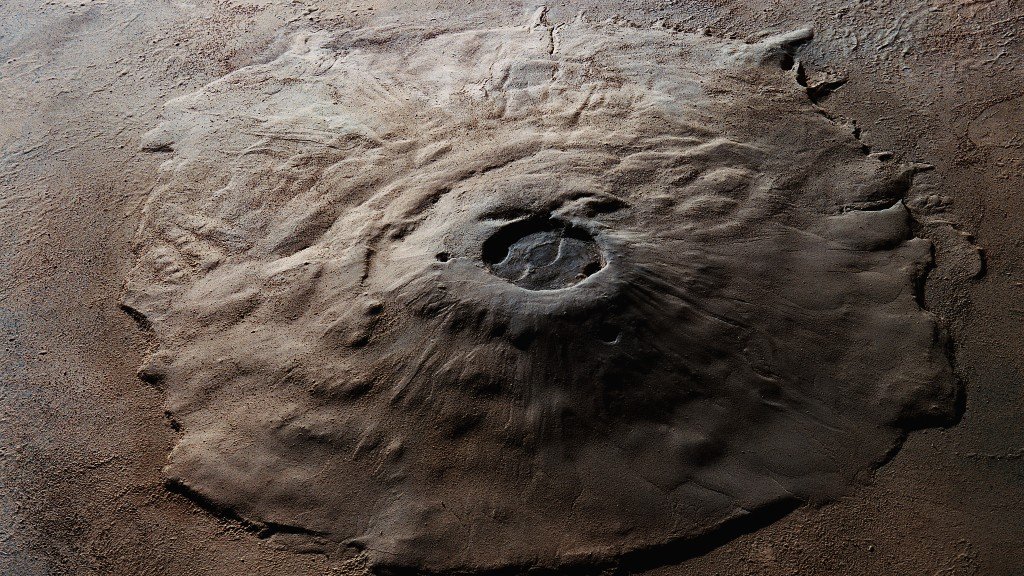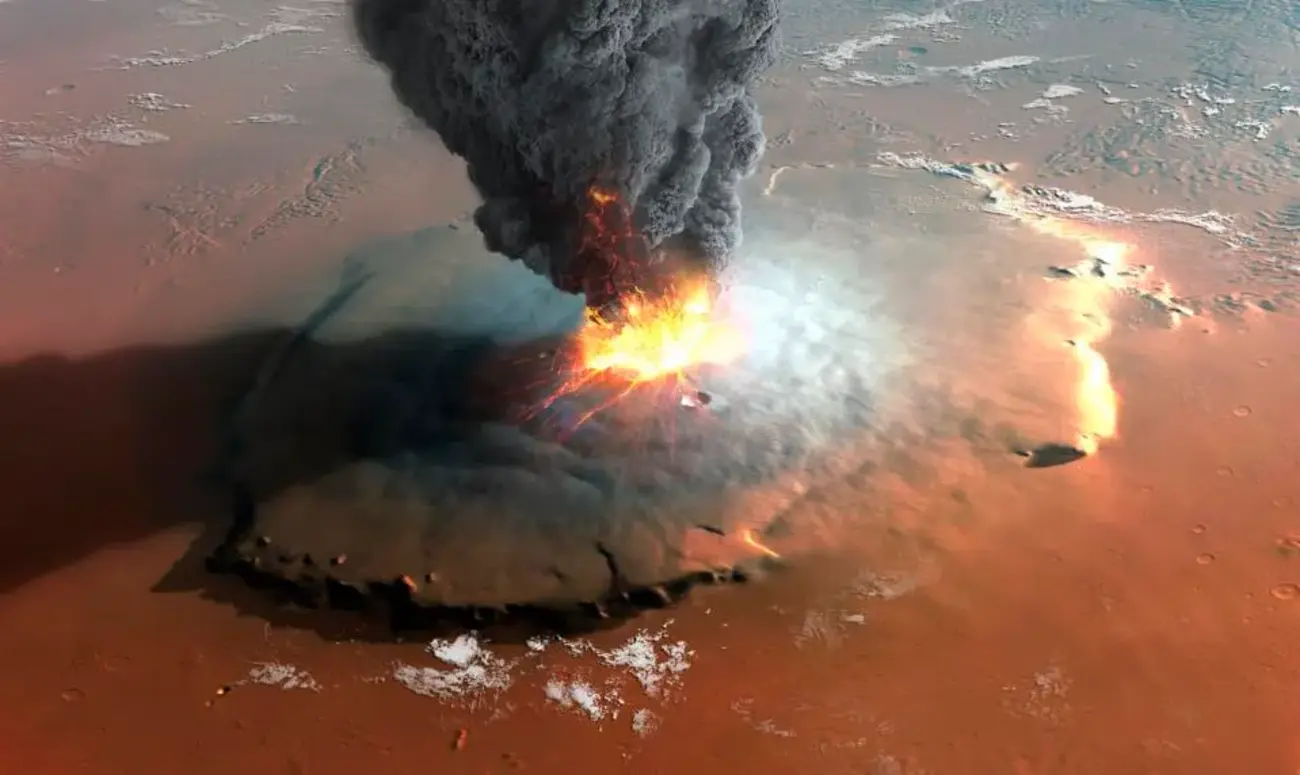Giant volcano found on Mars bigger than Mount Everest
The red planet “Mars” continues to surprise us with the recent giant volcano that is bigger than Mount Everest found on it.
In a recent study, scientists found this giant volcano as possibly a sheet of buried glacier ice in the eastern part of the Tharsis volcanic area of Mars near the equator.
This significant news was delivered at the 55th Lunar and Planetary Science Conference in the Woodlands, Texas. Since the launch of Mariner 9 in 1971, spacecraft circling Mars have captured several volcano images.
However, a massive volcano had heavily eroded and was difficult to view properly. It lay there for decades trapped between tangled Noctis Labyrinthus and the massive canyons of Valles Marineris. Hence, scientists discovered it on Mars hiding in plain sight.
The volcano is known as “Noctis Volcano” and has an elevation of +9,022 meters and a width of 450 kilometers. The volcanic structure on the surface of the red planet is located at 7° 35′ S, 93° 55′ W.
The massive size and complicated history of change show Noctis volcano has been active for a long period. Scientists also discovered a recent volcanic deposit with glacial ice beneath it in the southeastern region of Mars.
This discovery of a big volcano and likely glacial ice is noteworthy because it opens up a new chapter for scientists to explore Mars. It might potentially become a new destination of life and space exploration in the future.

Click here to read the updates on Giant volcanic superstructure found in the Pacific Ocean
Dr. Pascal Lee is a lead author of the study and a planetary scientist with the SETI Institute and the Mars Institute based at NASA Ames Research Center.
Dr. Pascal stated they were examining the geology of an area. They had also found the remains of a glacier last year in that area. They realized those remains were inside a huge and deeply eroded volcano.
Scientists also discovered a caldera (volcano mouth) remains near the center of the volcanic structure. It confirms Noctis volcano has been active in recent years. Caldera remains are often fragments of a collapsed volcanic hole that previously held a hot lava lake.
Read More:
- Sea creature turns into a baby when it is stressed out showing time travel
- Realme Narzo 70 Turbo 5G launch date, features, specifications & price
- European Space Agency printed 3D metal part in space for first time
- Earth’s mysterious Alaska triangle where over 20,000 people disappeared
- Philips Hue launched a new smart lighting solution for kitchen
- NASA to launch life-searching spacecraft to Jupiter’s moon Europa
Share this content:










Post Comment